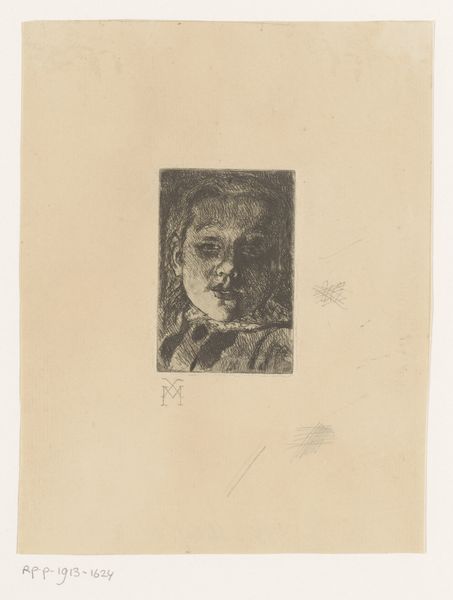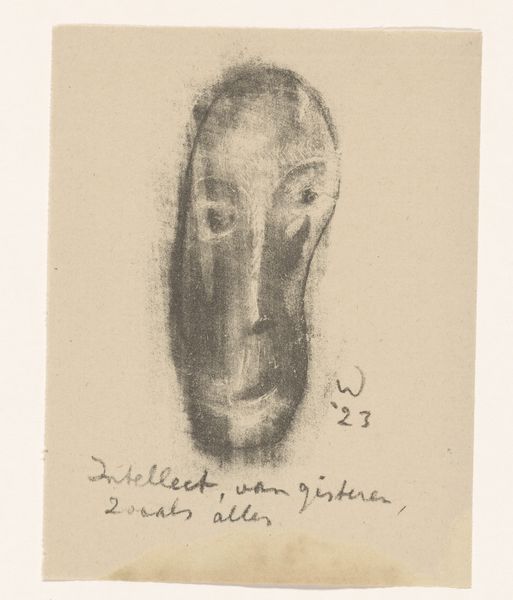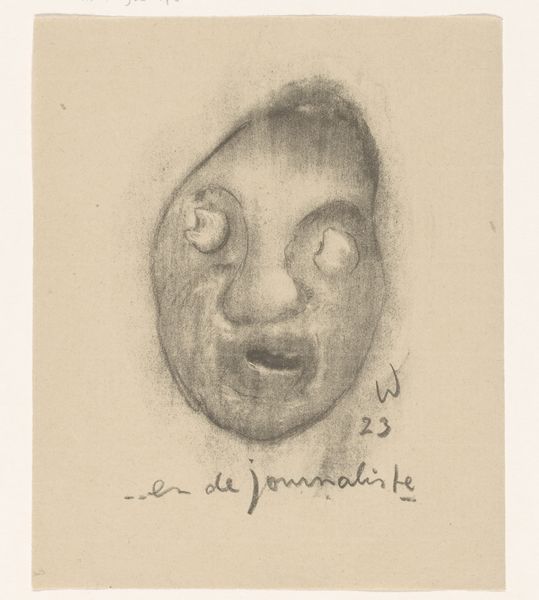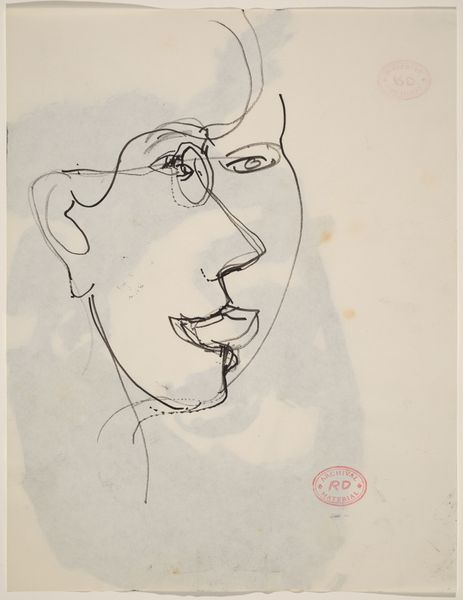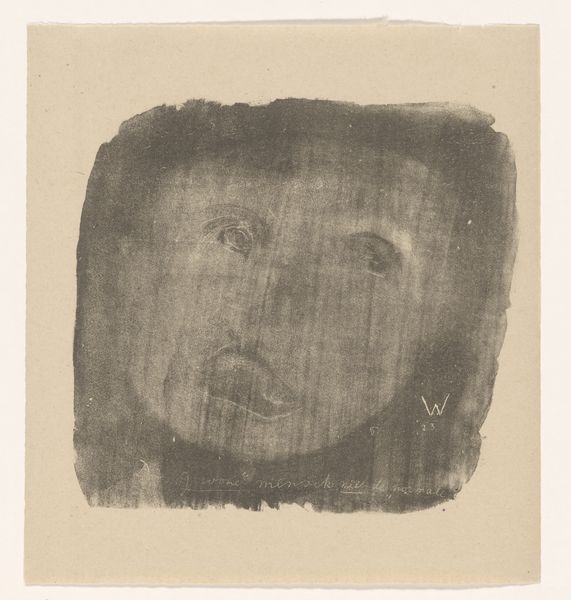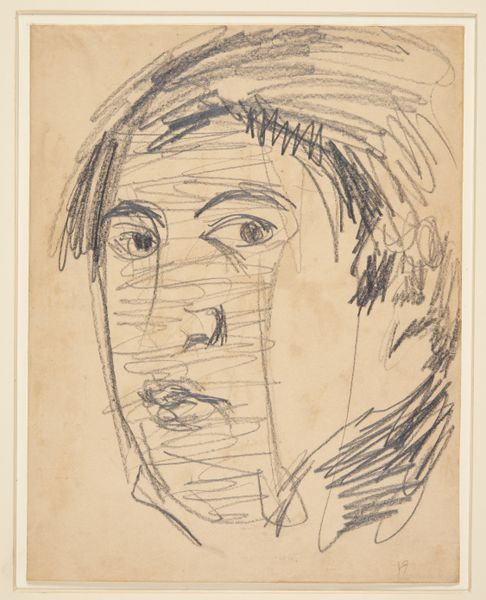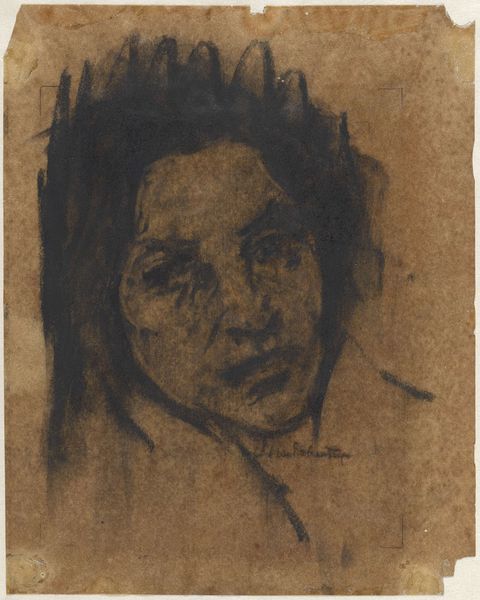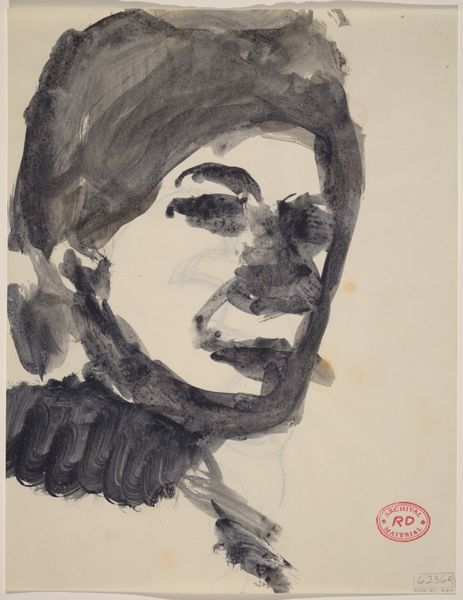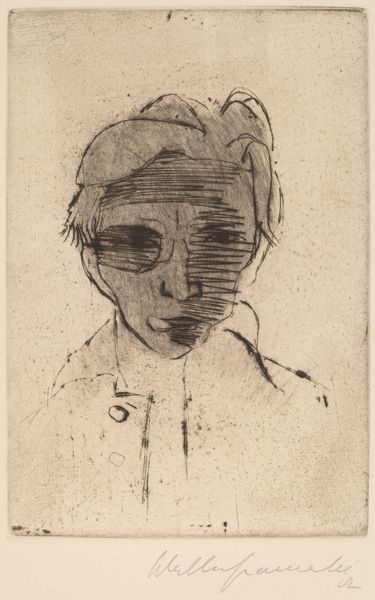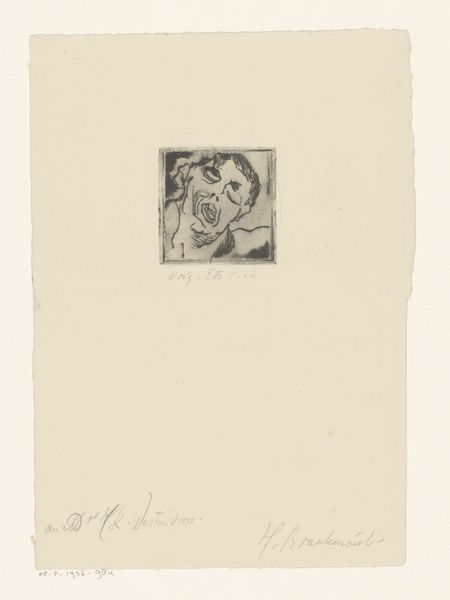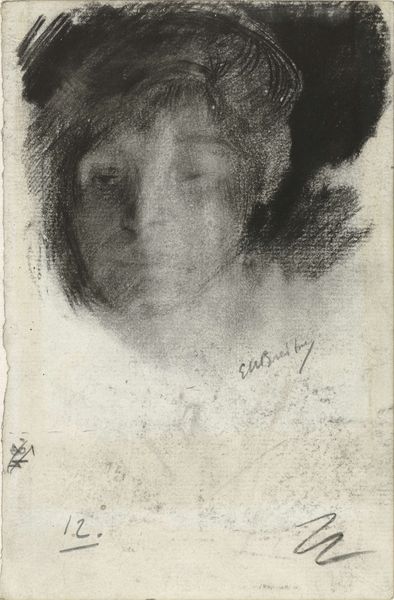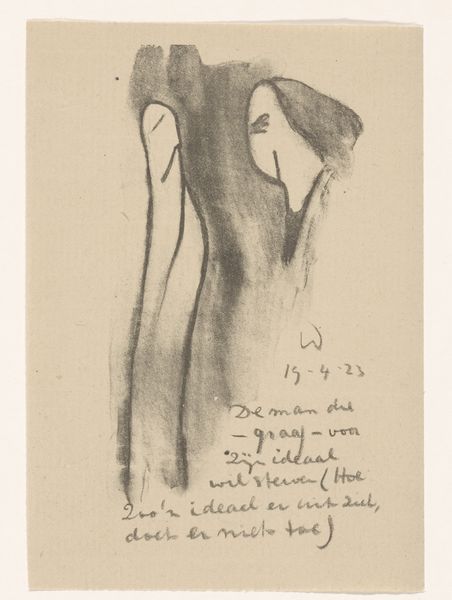
drawing, graphite
#
portrait
#
drawing
#
caricature
#
graphite
Dimensions: height 202 mm, width 133 mm
Copyright: Rijks Museum: Open Domain
Curator: Good morning, and welcome. We're looking at Erich Wichmann's "Karikatuur van Gerard Bolland," a graphite drawing from 1923. Editor: My first thought is it feels unsettling. The distortion is jarring, the gaze unnerving. Curator: The piece is fascinating for its brutal simplicity. Look at how Wichmann captures likeness purely through line and tone, exaggerating features for expressive effect. There's a concentration on form here: the slope of the brow, the bulbous nose rendered with minimal strokes. Editor: But that "brutal simplicity" speaks volumes. Bolland, a philosopher known for his controversial views, is rendered almost monstrously. It's not just a physical caricature; it's a commentary. The inscription below, a sardonic remark attributed to Bolland himself, reinforces that. Wichmann is engaging in a direct critique of power and ideology. Curator: Yes, and note the strategic use of white space. The face seems to emerge from nothing, a disembodied head floating on the page, focusing attention squarely on the features. Editor: Exactly! That disembodiment amplifies the sense of alienation, of Bolland being isolated for his beliefs. Given the social and political ferment of the 1920s, with rising anxieties about modernity, this image can be seen as capturing a widespread sense of unease and the anxieties around figures who challenged established norms. It reflects the artist's lived experience of social disruption after WWI, questioning traditional power dynamics. Curator: I’d also argue that the sketch-like quality heightens the sense of immediacy. It's raw, unrefined, like a fleeting impression quickly captured. This immediacy allows us a direct line to the artist’s interpretation of his subject. Editor: Precisely! And that ‘fleeting impression’ is laden with cultural baggage. The choice to represent Bolland in this manner isn't arbitrary, but it serves to contribute to the political dialogue of the day. It makes one ponder the position of philosophy within the culture. Curator: Thinking about the composition and the artist's intention… Editor: It’s impossible to divorce the artist’s intention from the historical backdrop against which the caricature unfolds. It compels viewers to critically assess representation within complex sociopolitical realities. Curator: Indeed. A powerful demonstration of line, form, and… Editor:…context. The interplay between visual and intellectual commentary leaves an impact. Thank you for engaging with these vital issues today.
Comments
No comments
Be the first to comment and join the conversation on the ultimate creative platform.

